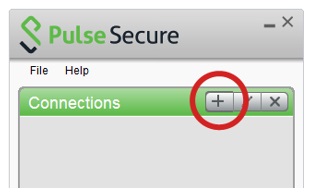

- #PULSE SECURE CLIENT PORTS SOFTWARE#
- #PULSE SECURE CLIENT PORTS PASSWORD#
- #PULSE SECURE CLIENT PORTS DOWNLOAD#
- #PULSE SECURE CLIENT PORTS WINDOWS#
#PULSE SECURE CLIENT PORTS PASSWORD#
Use username logintc-user and the password you set upon initial launch of the appliance. First ConfigurationĬlose the console and navigate to your appliance web interface URL. Section specific validation simplifies troubleshooting and gets your infrastructure protected correctly faster. Each section has a Test feature, which validates each input value and reports all potential errors. The web interface makes setting up a configuration simple and straightforward. It is strongly recommended to enable encryption of all sensitive fields for both PCI compliance and as a general best practice. This section describes which RADIUS-speaking device will be connecting to the appliance and whether to encrypt API Key, password and secret parameters. However with either a static list or Active Directory / LDAP Group you can control whom gets challenged to facilitate seamless testing and rollout. This section describes whether the appliance will perform a LoginTC challenge for an authenticating user.

If no first factor is selected, then only LoginTC will be used for authentication. Either against an existing LDAP, Active Directory or RADIUS server. This section describes how the appliance will conduct an optional first factor. Only users that are part of your organization and added to the domain configured will be able to authenticate. This section describes how the appliance itself authenticates against LoginTC Admin Panel with your LoginTC Application. You will be asked to change the default password on first boot of the appliance and will not be able to access the web interface unless it is change.Ĭonfiguration describes how the appliance will authenticate your RADIUS-speaking device with an optional first factor and LoginTC as a second factor. Logintc-user is used for SSH and web access. A firewall runs with the following open ports: Port The LoginTC RADIUS Connector runs CentOS 7.7 with SELinux.
#PULSE SECURE CLIENT PORTS SOFTWARE#
#PULSE SECURE CLIENT PORTS DOWNLOAD#
#PULSE SECURE CLIENT PORTS WINDOWS#
An Application represents a service (e.g. RDP access to your Windows infrastructure) that you want to protect with LoginTC.Ĭreate a LoginTC Application in LoginTC Admin Panel, follow Create Application Steps. Start by creating a LoginTC Application for your deployment.


Pulse Connect Secure and any other appliance which have configurable RADIUS authentication are supported.īefore proceeding, please ensure you have the following:


 0 kommentar(er)
0 kommentar(er)
